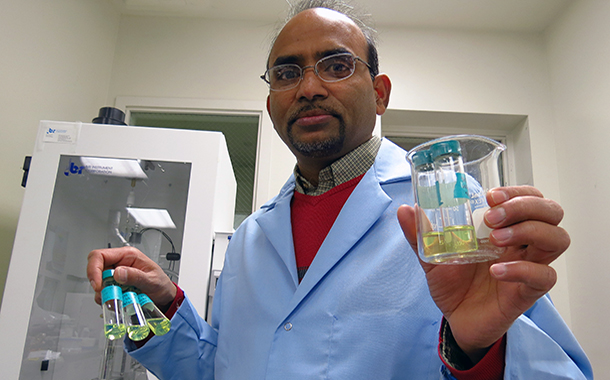
Non-petroleum biobased machine lubricants are an increasingly important strategy for preventing pollution in environmentally sensitive work places, such as for forest, agricultural, and marine applications. The new book Environmentally Friendly and Biobased Lubricants by Brajendra K. Sharma and Girma Biresaw, published by CRC Press, focuses on innovations in this promising area.
Eco-friendly machine lubricants made from vegetable oil are a growing niche in the +$150 billion global lubricants industry. Biobased lubricants are preferred for machines used in total-loss applications (in which the lubrication oils are lost to the environment) because they are renewable, have low ecotoxicity, and are biodegradable when they enter the environment.
They possess good performance properties, such as having lower volatility, higher flash points, higher viscosity indexes, and better boundary lubricant properties, compared with petroleum lubricants, according to Sharma, a senior researcher at the Illinois Sustainable Technology Center, a division of the Prairie Research Institute at the University of Illinois at Urbana-Champaign.
The book surveys researchers’ growing success in producing designer molecules that reduce heat and minimize friction as well as or better than their petroleum-derived counterparts. Sharma and Biresaw, a research chemist at the U.S. Department of Agriculture’s Agricultural Research Service in Peoria (ARS), have synthesized the broad body of current research in their book.
 Biobased lubricants are not likely to replace petroleum completely, Sharma said. Bio-lubricants today are scarcely one percent of the total market demand for lubricants, but their annual demand is growing at a rate of 16 percent per year, compared with the two percent annual demand growth for petroleum versions. “But in applications where lubricants are likely to be lost to the environment, these products are taking a firm hold in the marketplace,” he said.
Biobased lubricants are not likely to replace petroleum completely, Sharma said. Bio-lubricants today are scarcely one percent of the total market demand for lubricants, but their annual demand is growing at a rate of 16 percent per year, compared with the two percent annual demand growth for petroleum versions. “But in applications where lubricants are likely to be lost to the environment, these products are taking a firm hold in the marketplace,” he said.
Using heat and enzymes, researchers strip double bonds from molecules, add new elements, attach branches, or join two molecules together to mimic the properties of petroleum lubricants. They are now finding ways to overcome persistent weaknesses of bio-lubricants, including poor oxidative stability and poor low-temperature flow properties.
Some of the best results leading to commercial products are obtained from processing the fatty acids present in vegetable oils. Estolide lubricants developed at the Agricultural Research Service laboratory solve many of the negatives of raw vegetable oils—excellent lubricity, low-temperature performance, oxidative stability, and biodegradability. In addition to lubrication, estolides are being evaluated for use in food applications, cosmetics, cooling fluids, and inks.
Other naturally derived fatty acid compounds under study for lubricant applications include epoxidized oil, vegetable oil diesters, and isostearic acids, according to Sharma. The increasing interest in eco-friendly lubricants is also good news for farmers in the Midwest who grow the raw materials, he added.
Most studies have shown that canola oil will produce the best overall characteristics for bio-lubricants, but corn, soybean, and rapeseed oils are also widely used. Another biologic crop — sugar cane — is taking a far different path to lubrication. Amyris Inc. is commercializing its renewable hydrocarbon farnesene, made with cane sugar and a bioengineered yeast, to produce hydrocarbons for jet fuel, lubricants, and many other uses.
Sharma is currently designing renewable bio-additives to improve the performance characteristics of eco-friendly lubricants. Just as with petroleum lubricants, additives are blended to improve the lubricity, oxidative stability, friction, wear, and corrosion resistance of the base material.
Sharma’s latest patent is for a new molecule of fatty acid chemically modified with boron to produce an antiwear, antifriction additive for vegetable oil-based lubricants. As Sharma continues to build new shapes for plant-derived molecules in the laboratory, he said his goal is to develop a single additive that optimizes all the critical properties of sustainable and renewable lubricants.

